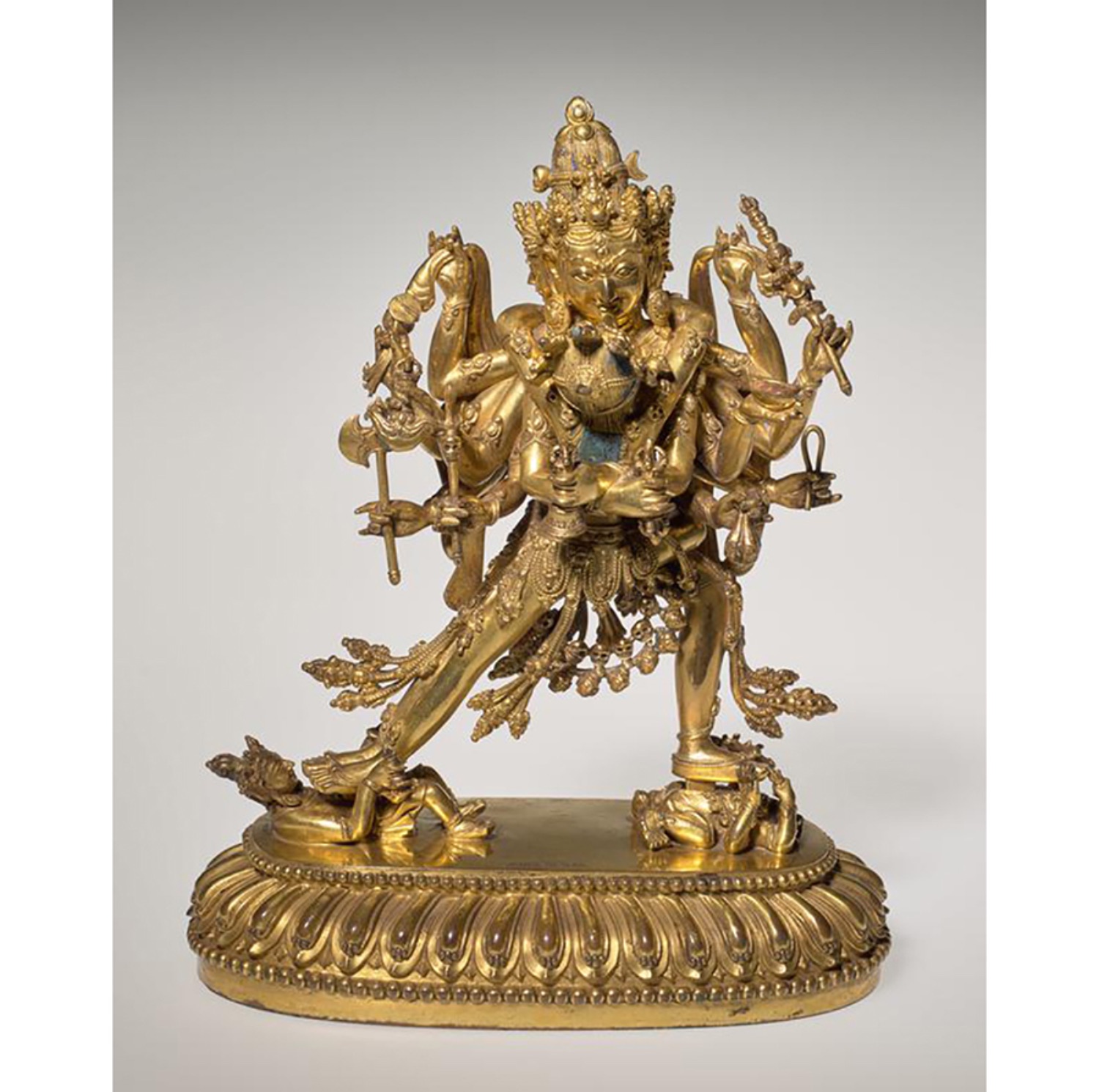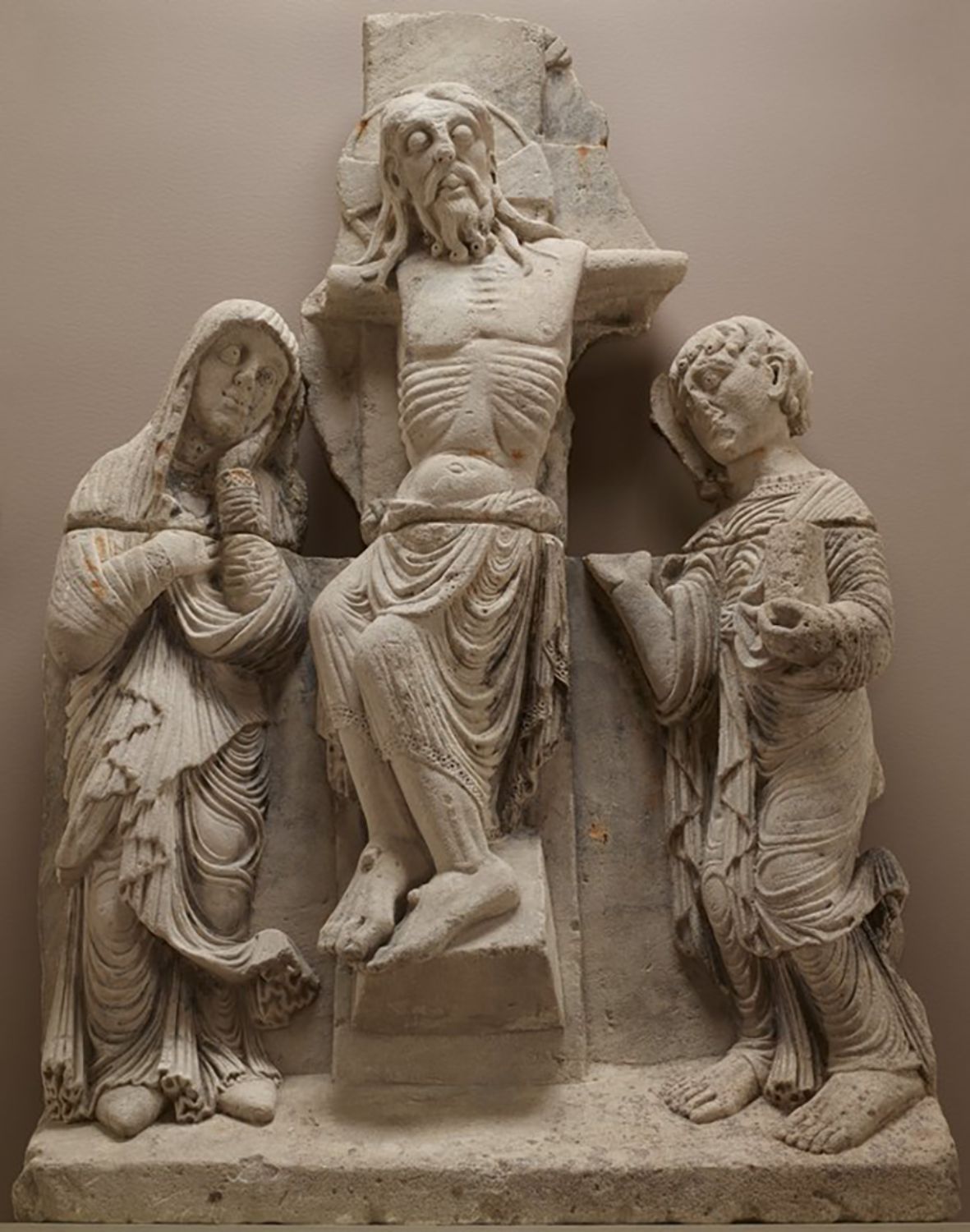
A Medieval Twin Cities Starter Pack: Digging Into the Art of the Middle Ages
Published February 12th, 2025 by Sophie Durbin
Take a whirlwind tour of the Dark Ages in this sizzle reel of art and artifacts at Mia, ASI, and elsewhere in Minnesota & online
Banner image: Statues of saints on the facade of Notre Dame, c. 1260 CE. Photo courtesy of Pexels.
The Twin Cities has some stellar medieval objects in its museum collections. This should come as no surprise, given the local obsession with a certain football team named after a group of Scandinavian pirates active from roughly the eighth century to 1000 CE. Still, some may be stunned at the amount of medieval material hidden in plain sight. If you’ve never spent much time lingering on a medieval work of art or deepening your critical thinking about art history, this is a great place to start exploring.
Often originally meant to be functional objects for worship or ritual use, medieval objects are evocative and mysterious. There is a peculiar distance in their presence. They may be beautifully or enigmatically crafted, and they represent cultures, empires, and periods of history that are often neglected between Rome and the Renaissance.
As you create your own medieval art itinerary, I encourage you to be contemplative. What’s this piece doing here? What might it “mean” to those who used it? Who donated this piece? Did they have any particular interest in this kind of art, or art from this particular place, or time period? Why? Were they wealthy, or just in possession of some interesting things? What if the provenance is unknown? What unofficial, underground, or even criminal economies might that point toward? What if the museum purchased the object itself — what might the motivation be for the acquisition? Follow the money. It is important to know how objects come to us, and this is information that can be shared fairly objectively but often is not. The paperwork is always interesting, and different forms tell different stories. When metadata tells stories, that’s provenance!
I’ll be using a fairly loose chronological definition of the medieval period; some art historians will accept a date as early as 200 CE to begin this era, and some will accept a date as late as the 17th century, and you will see examples of both here. I’ve kept the geographic reach broad as well.
Mia
Tang Dynasty Hairpieces
c. 11th century, China

All images courtesy of Mia's online collection.
The Minneapolis Institute of Art has an outstanding collection of Chinese art dating from the Neolithic period onward. These dazzling hair accessories were donated by Ruth and Bruce Dayton, who had an enormous impact on the museum’s collection. It’s worth digging into their collecting history and reading the stories embedded there.
Khorlo Demchog Embracing Dorje Phagmo
1403 - 1424, Tibet, Yongle period

The most stunning thing I encountered on my research visit to Mia was the Tibetan Buddhist Prayer Room, an immersive installation of sacred and ritual objects donated by Alice S. Kandell, a child psychologist who amassed a collection of Himalayan art between 1965 and 1979. The prayer room should be experienced as a whole.
The gallery outside the prayer room features additional stunning examples of Tibetan art, including this immaculately detailed sculpture. Also donated by the Daytons, this Vajrayana Buddhist object depicts the embrace between two deities, representing wisdom and compassion. Khorlo Demchog and Dorje Phagmo are shown stepping on two Hindu deities. (Of note: the museum didactic is written in Wylie, which is a method of transliterating Tibetan, while Mia's Collections site lists the work's title in Sanskrit.) Here, the immaculately worked gilt bronze sculpture is a showcase for the complex interplay between religions in medieval Tibet.
Crucifixion scene
c. 1180, Spain

This Romanesque sculpture depicts an intense crucifixion, in which Jesus’s bodily agony is emphasized through his deeply grooved bony rib cage, his oddly ecstatic expression — eyes half open — and his swollen feet nailed crudely to the cross. This is typical of the transformation in depictions of Christ in the later Middle Ages, which start to focus on expressing his pain. The museum estimates that the piece dates from the late 12th century in Northern Spain, noting that it “would have been in the center of a tympanum, an arched church entrance.”
The Entombment of Christ
c. 1250, France

Those who have been to the Cloisters in New York City and/or metalwork enthusiasts will recognize this object’s resemblance to the reliquary cross in the Treasury. These objects were produced in Limoges, France, renowned for its unique metalwork tradition. A thorough examination will reward with fine details: blue enamel set in the figures’ eyes, intricate folds on the fabric enshrouding the casket, and delicate floral patterns at the base.
Diptych
c. 1700, Ethiopia

This diptych is technically from outside the bounds of the medieval period, but it is representative of a long tradition of distinctive devotional art that spans back to the earliest days of Ethiopia’s Christianization in the fourth century. Diptychs like this were designed for use in processions and other public displays of worship. Picturing the object in motion, from afar, may help to explain the utility of its unique, bold style.
American Swedish Institute
Viking Age “Tortoise shell” Brooch
c. 10th century, Sweden

Make an appointment with the ASI’s collections team to view this object, an example of an oval-shaped brooch with a “tortoise shell” design, a type that has been found, usually in pairs, in pagan female burials throughout the Viking world. Collections specialist Maggie Coleman shared with me how this brooch, part of a set of other Viking Age decorative artifacts, came to the museum as a donation from a museum in Sweden. Those interested in Viking age art should seriously consider a visit — these are not easy object types to get face time with in the United States.
Stuck at Home?
Check out UMN’s Map Archive.
 Detail of the 1602 World Map of Matteo Ricci, showing sections of what is now known as North, Central, and South America and the Caribbean. Courtesy of James Ford Bell Library.
Detail of the 1602 World Map of Matteo Ricci, showing sections of what is now known as North, Central, and South America and the Caribbean. Courtesy of James Ford Bell Library.
The University of Minnesota digitized more than 22,000 maps found in the rare books and atlases in the James Ford Bell Library. Maps are never objective: They are often drawn with a special interest in encouraging a particular interpretation of an area. Place names are solidified in maps, often obscuring Indigenous origins. Maps tell stories about colonization, conquest, and the arbitrary and ever-shifting nature of borders.
Extra Credit Field Trip: The Kensington Runestone
In 1898, Olof Ohman dug up a slab inscribed with runes in his field near Kensington, Minnesota. The runes seemed to describe an ill-fated inland journey of medieval Norse settlers from Vinland in 1362 (Vinland is now understood to refer to the Norse outpost at L’anse aux Meadows in Newfoundland, which was established by Leif Erikson between 990 and 1050 CE). The inscription is also explicitly Christian, ending with “A.V.M. [Ave Virgo Maria] save us from evil.”
While the runestone is considered inauthentic by every period specialist to analyze it, it remains on display at the Runestone Museum in Alexandria, MN, about two hours outside the Twin Cities. For a deeper examination, read David M. Krueger’s Myths of the Rune Stone: Viking Martyrs and the Birthplace of America. It is worthy of discussion as a pseudo-archaeological artifact in its own right: Why did Swedish immigrants in Minnesota have an interest in claiming their ancestors arrived before Columbus? Just like the provenance of all these other objects, that's a bit of history unto itself. Take a little road trip, and see the real (probably fake) runestone for yourself! ◼︎
 A vastly oversized replica of the Kensington Runestone (actual size, roughly 2 ft tall), supposedly discovered in a field in 1898. Image courtesy of MNopedia.
A vastly oversized replica of the Kensington Runestone (actual size, roughly 2 ft tall), supposedly discovered in a field in 1898. Image courtesy of MNopedia.
The Minneapolis Institue of Art is free to visit and open Tuesday – Sunday, 10am – 5pm, and til 9pm on Thursdays.
The American Swedish Institute is ticketed ($15 for adults, with discounts for seniors, children, and ASI members) and open Tuesday – Sunday, 10am – 4pm, and til 8pm on Thursdays.
The Runestone Museum is ticketed ($10 for adults, with discounts for seniors, veterans, students, and children) and open Tuesday – Saturday, 10am – 4pm.
We can't do it without you.
Help keep independent arts journalism alive in the Twin Cities.